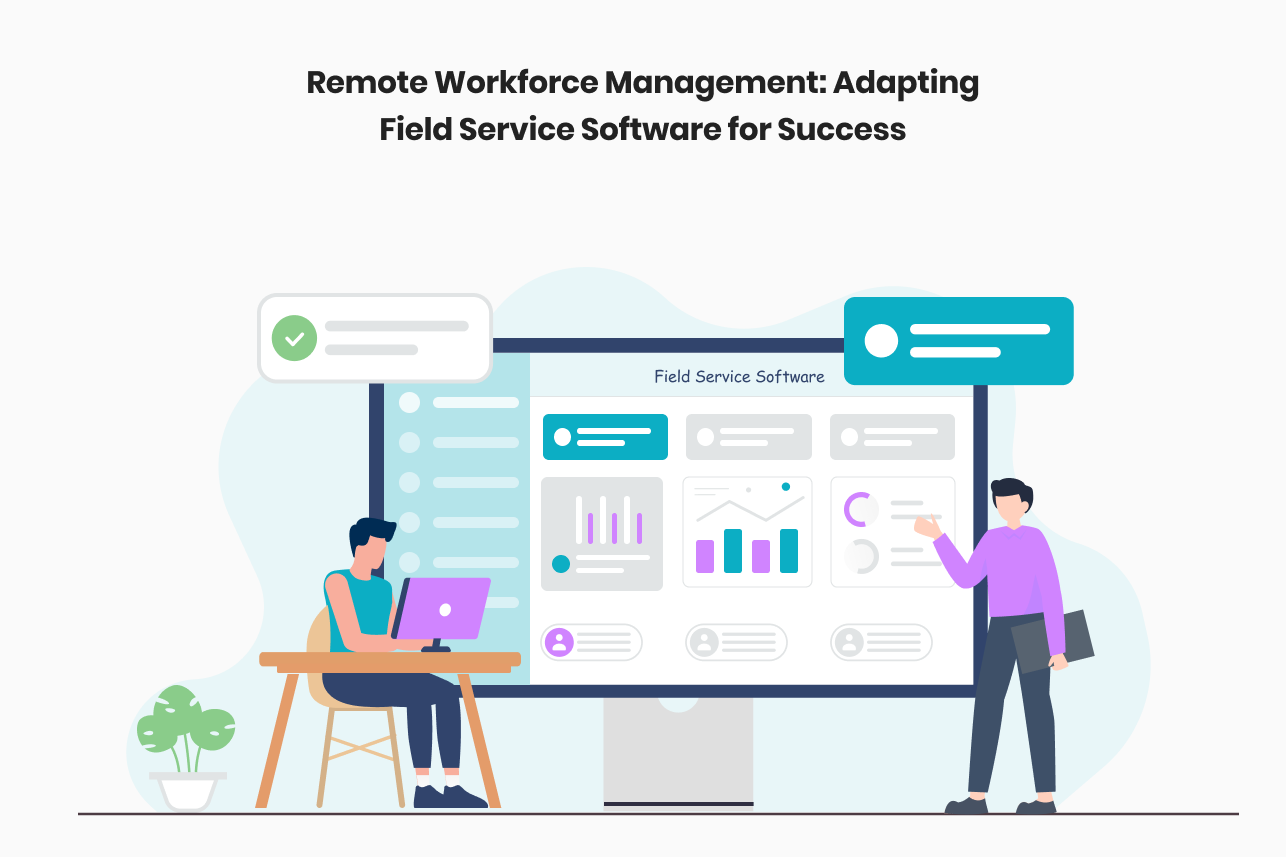In today’s rapidly evolving business landscape, remote workforce management has become increasingly crucial. With the rise of telecommuting and the need for efficient field service operations, businesses are turning to advanced solutions like field service management software to streamline their processes and ensure success. This article explores the importance of adapting field service software for remote workforce management and highlights key strategies for optimizing its effectiveness.
The Importance of Field Service Management Software
Field service management software plays a pivotal role in coordinating and managing remote workforces. Whether it’s scheduling service appointments, dispatching technicians, or tracking job progress, this software provides a centralized platform for overseeing all aspects of field operations. By leveraging automation, real-time communication, and data analytics, businesses can enhance efficiency, reduce costs, and deliver superior service to customers.
One of the primary challenges faced by remote workforces is the need for seamless coordination and communication. Field service management software addresses this challenge by facilitating efficient communication between field technicians, dispatchers, and back-office staff. With features like mobile access, instant messaging, and GPS tracking, teams can stay connected regardless of their physical location, enabling swift decision-making and problem resolution.
Furthermore, field service software enables remote workforce management through comprehensive scheduling capabilities. By optimizing technician routes, assigning tasks based on proximity and skillset, and providing real-time updates on job statuses, businesses can minimize travel time, maximize productivity, and improve customer satisfaction. Additionally, automated scheduling ensures that appointments are promptly attended to, reducing the likelihood of delays or missed opportunities.
Another critical aspect of remote workforce management is resource allocation and optimization. Field service management software empowers businesses to efficiently allocate resources such as manpower, equipment, and inventory based on demand and availability. By maintaining accurate inventory records, tracking asset usage, and forecasting service requirements, organizations can minimize wastage, improve resource utilization, and optimize operational costs.
Adapting Field Service Software for Remote Workforce Management
To harness the full potential of field service management software for remote workforce management, businesses must implement tailored strategies and best practices. Here are some key considerations:
- Embrace Mobility: Mobile accessibility is essential for remote workforces. Ensure that your field service software is compatible with smartphones and tablets, allowing technicians to access critical information, update job statuses, and communicate with colleagues while on the go. This flexibility enhances productivity and responsiveness, enabling teams to address customer needs promptly.
- Leverage Automation: Automation streamlines repetitive tasks and minimizes manual intervention, freeing up valuable time for technicians to focus on high-priority activities. Implement automated scheduling, dispatching, and invoicing processes to eliminate errors, reduce administrative overhead, and accelerate service delivery. However, maintain a balance to avoid over-reliance on automation, as human oversight is still necessary for complex decision-making and problem-solving.
- Prioritize Data Security: With remote work comes increased cybersecurity risks. Protect sensitive customer information, intellectual property, and operational data by implementing robust security measures such as encryption, access controls, and regular audits. Educate employees about cybersecurity best practices and enforce strict policies to safeguard against data breaches and cyber threats.
- Foster Collaboration: Effective collaboration is essential for remote teams to thrive. Encourage open communication, knowledge sharing, and teamwork among field technicians, dispatchers, and support staff. Utilize collaboration features within your field service software, such as shared calendars, chat channels, and document repositories, to facilitate collaboration and foster a cohesive work environment.
- Continuously Train and Support Employees: Remote work can be isolating, especially for field technicians who spend much of their time on their own. Provide comprehensive training and ongoing support to equip employees with the necessary skills, tools, and resources to excel in their roles. Offer regular feedback, coaching, and professional development opportunities to empower employees and foster a sense of belonging within the organization.
Conclusion
In conclusion, remote workforce management is essential for modern businesses operating in a digital age. By leveraging field service management software tailored for remote operations, organizations can optimize efficiency, enhance communication, and deliver exceptional service to customers. By embracing mobility, automation, collaboration, and cybersecurity best practices, businesses can adapt to the evolving demands of remote work and achieve success in today’s competitive landscape.
Remember, the key to effective remote workforce management lies in embracing technology, fostering collaboration, and empowering employees to thrive in a remote environment. With the right tools and strategies in place, businesses can overcome challenges, maximize productivity, and drive growth in the era of remote work.
Field service management software serves as the cornerstone of remote workforce management, enabling businesses to coordinate, manage, and optimize field operations with ease. By prioritizing the adoption and adaptation of field service software, organizations can unlock the full potential of their remote workforce and achieve sustainable success in today’s dynamic business environment.
